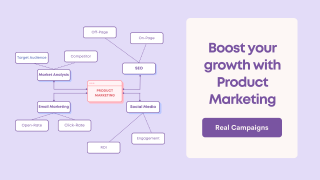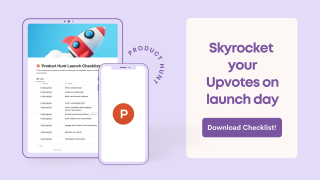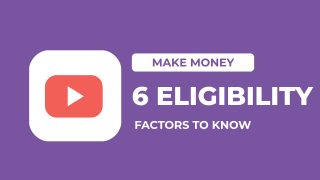It’s time to spill the beans on the top secrets from Typeform’s onboarding flow.
As you know, Typeform is a leading online form and survey builder with a reputation for delivering an exceptional user experience.
And their onboarding flow is no exception – it’s so good, it’s almost criminal.
That’s right, we’re talking grand theft onboarding.
In this post, we’ll be taking a deep dive into Typeform’s onboarding process and sharing the top strategies and best practices that you can borrow for your own business.
So if you’re looking to improve your onboarding experience for new users, you won’t want to miss this!
Just don’t get caught red-handed trying to steal all of Typeform’s onboarding secrets.

1. Benefit-Driven Strategy
At the core of Typeform’s onboarding process is a hunger to learn more about the user.
No, seriously, we’re talking intense curiosity here.
But rather than just requesting data for the sake of it, Typeform explains the benefits of providing this information upfront.
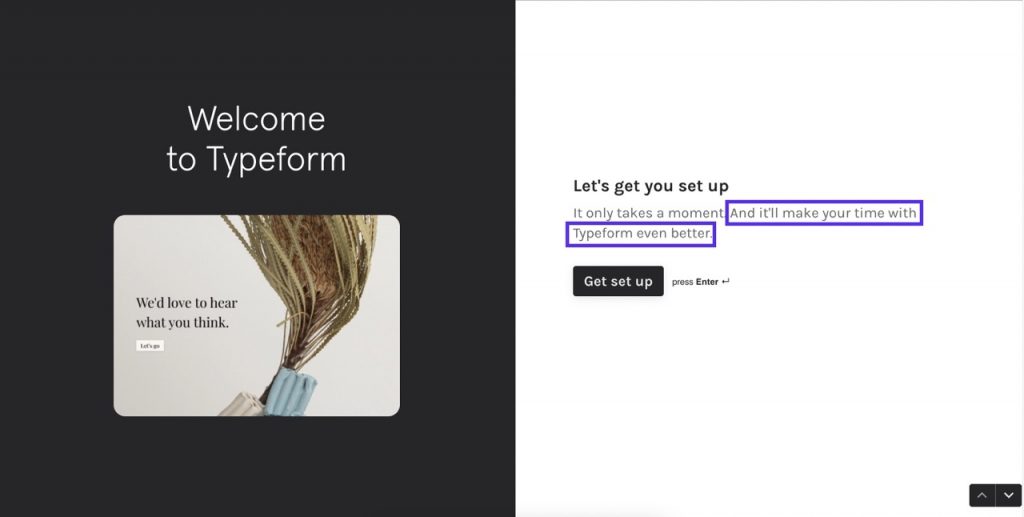
This benefit-first approach helps the user understand why their data is important (and why we’re so darn interested in it), and encourages them to provide it without hesitation.
As you can see in the image below, the copy is designed to make the user feel like their time with Typeform will be even better if they provide this information.
It’s kind of like a quid pro quo – we give you a personalized dashboard and send you relevant updates and tips, and you give us your personal information.
Win-win!

This is a smart strategy that can help to build trust and make the onboarding process more seamless (and satisfy our curiosity).
2. Setting Time Expectations in Onboarding
Informing the user how long it will take to complete the onboarding is the best way to keep them from fleeing in terror.
No one wants to embark on a never-ending journey of form-filling and data entry, so letting them know that it won’t take long helps to ensure that the onboarding process will be ease and simple (or at least as simple as it can be).
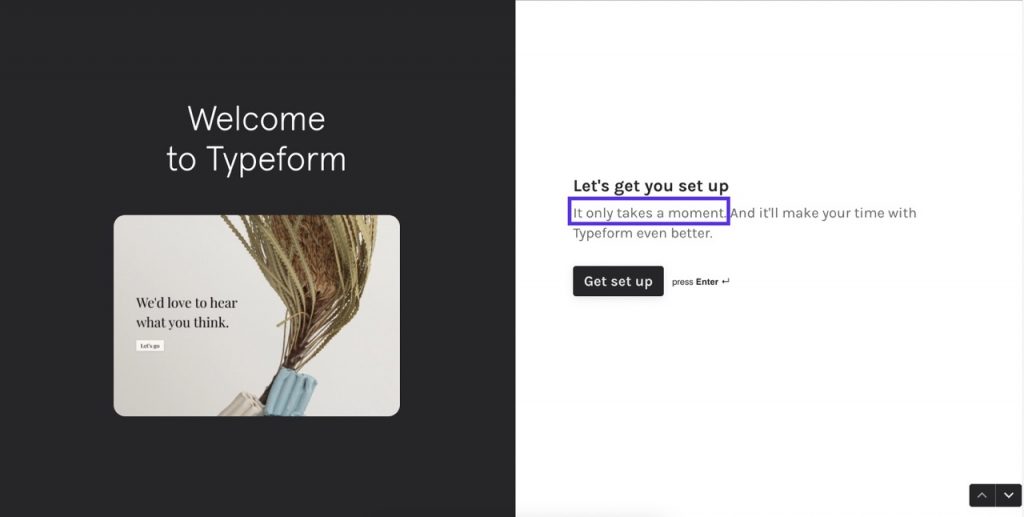
Typeform nails it by adding the reassuring phrase “It only takes a moment” in the first line of the description.
Because let’s be real, no one has time for an onboarding process that takes longer than the actual work itself.

So kudos to Typeform for setting realistic expectations and keeping the user’s sanity in mind.
3. Attention to Detail
Only master minds who understand user habits (or are just really good at stalking their users) might have crafted this onboarding flow.
If you take a closer look, you’ll notice something called “Press Enter“. But why bother to know if the user is an intense mouse user or a keyboard fanatic?
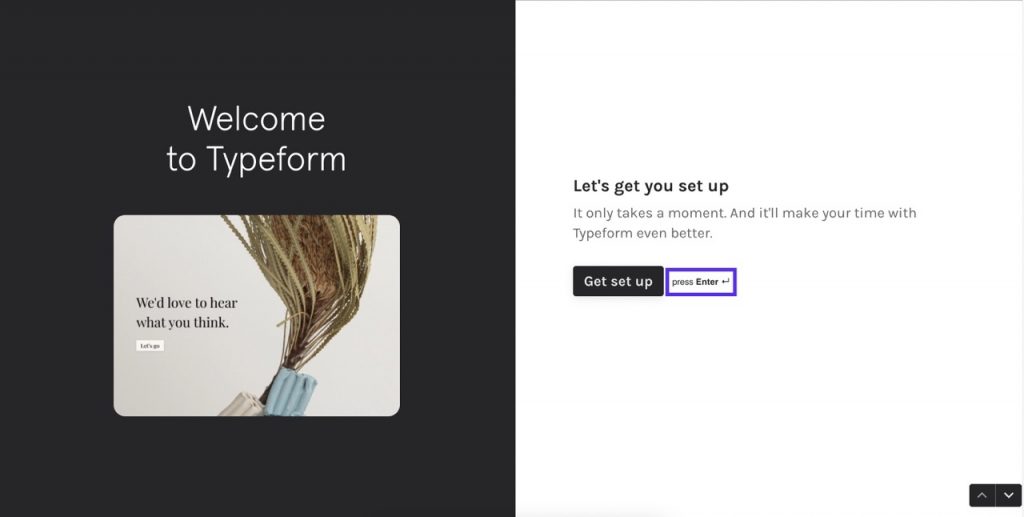
Because it matters, my friend.
Users feel connected and find comfort if the platform is tailored to cater to their tech habits.
It’s like having the perfect pair of shoes – once you find a platform that fits your needs, you never want to let it go.
Typeform knows this, and they’ve added a special function to appease the keyboard-intense crowd.
4. One Size Does Not Fit All
Typeform’s onboarding flow is like a choose-your-own-adventure book, except instead of fighting dragons or escaping from a haunted house, you’re just filling out a form.
But seriously, the platform has different onboarding flows for different types of users.
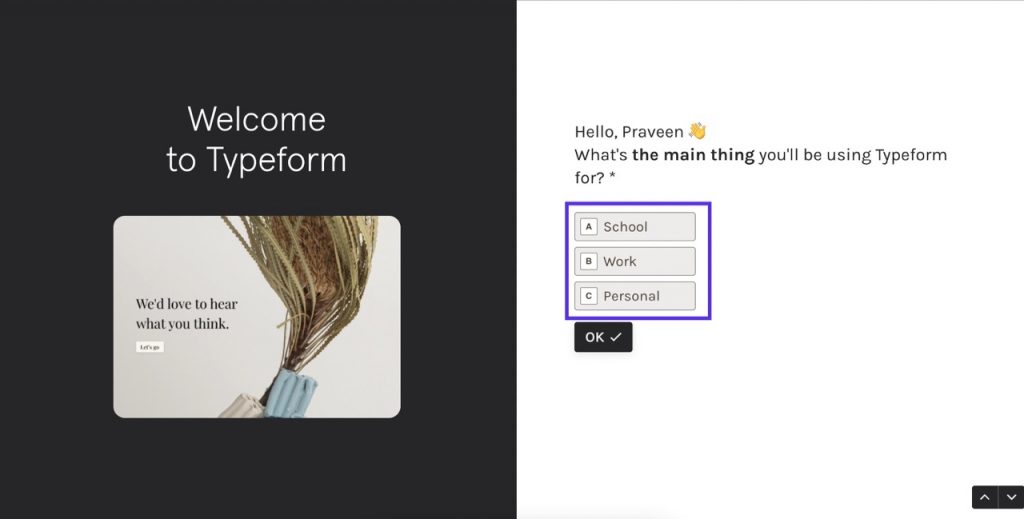
The school and personal use crowd doesn’t require much data – they’re whisked through the process in just three short slides.

But for users in the “work” category, it’s a different story.
They’ve got to share more data, which is kind of like being asked to give up your firstborn child.
It’s a tough ask, but hey, at least the onboarding flow won’t take too long.
5. Sorting Hat Onboarding Flow
By asking users about their main activity, Typeform is able to segment its users into different categories like a boss.
It’s like the Sorting Hat from Harry Potter, except instead of sorting people into Hogwarts houses, it’s sorting people into categories based on their needs and goals.
This allows Typeform to tailor its marketing and product development efforts to better meet the needs of each segment.
It’s like a tailor-made suit – everything fits just right.
And by gathering this information about the user’s main activity, Typeform can personalize the user’s experience with the platform.
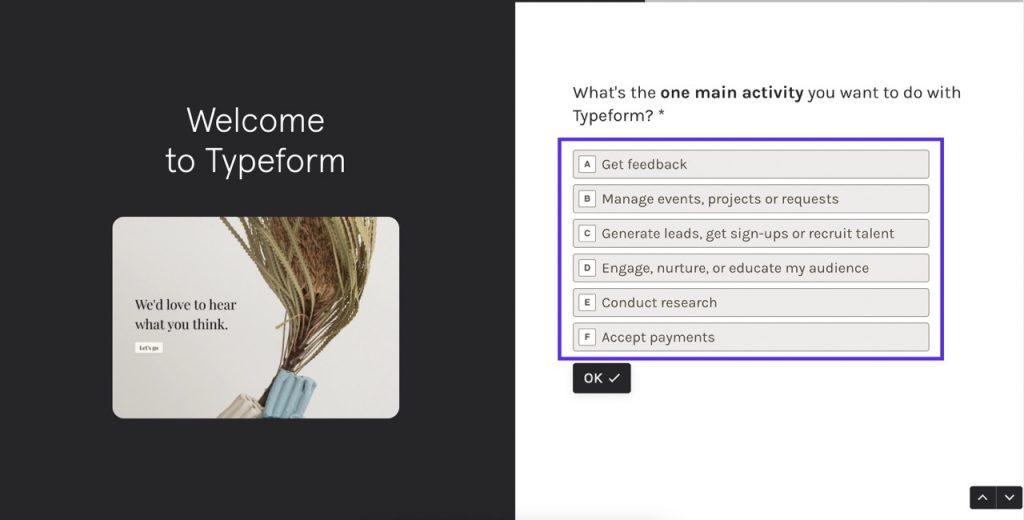
Imagine if a user selects “get feedback” as their main activity – Typeform would be all over it, offering customized tips and resources for gathering and using feedback effectively.
It’s like having your own personal feedback coach.
6. Novice or Pro?
Typeform wants to know if the users are familiar with software for creating online forms and surveys.
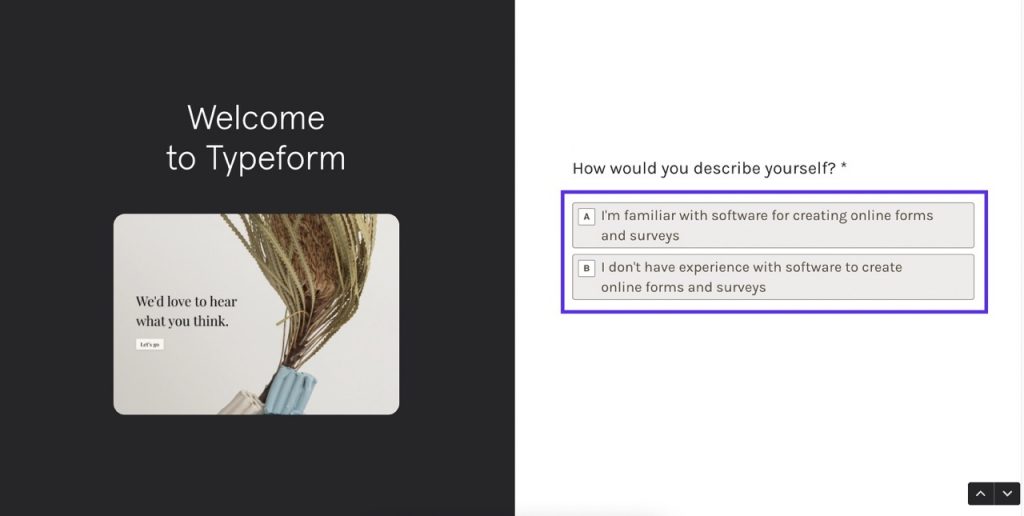
By gathering this information about the user’s level of experience, Typeform can personalize the onboarding experience to the user’s needs.
It’s like having a personalized tutor – if you’re a form-building software pro, you can skip ahead to the advanced stuff.
But if you’re a complete novice, Typeform will provide all the resources and support you need to get up to speed.

And by asking this question, Typeform may be able to gather valuable feedback from its users about their needs and expectations for the platform.
It’s like a suggestion box, but way cooler.
This information can help Typeform to improve its product and marketing efforts.
7. The Power of Text Formatting
One of the ways that Typeform has tailored its service to the needs of its users is by dividing them into groups based on factors such as the industry they work in, their organization, and their role within the organization.
This allows Typeform to provide more targeted and relevant content and features to each group of users.
In addition to this segmentation, Typeform also understands that users often do not read online content in detail, but instead skim through it looking for the most important information.
To help users quickly understand and engage with the onboard flow, Typeform employs text formatting techniques such as bolding key terms.
By highlighting the terms such as “industry”, “organization”, and “your role”, Typeform makes it easier for users to skim the content and still understand the questions being asked.
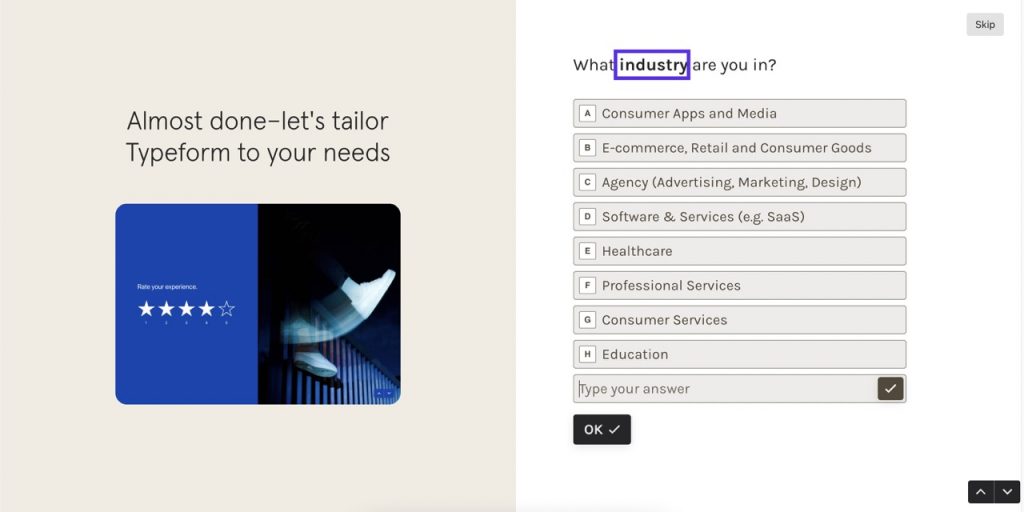
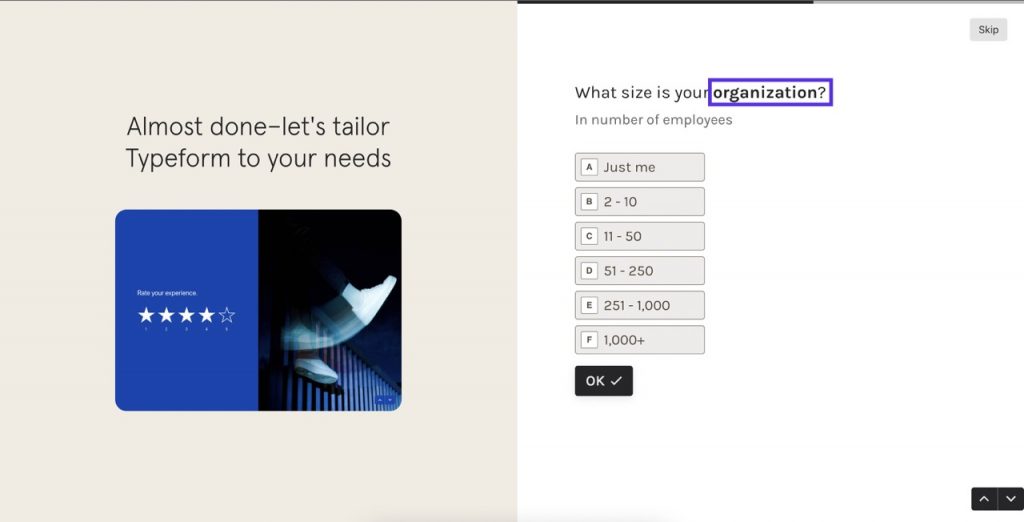
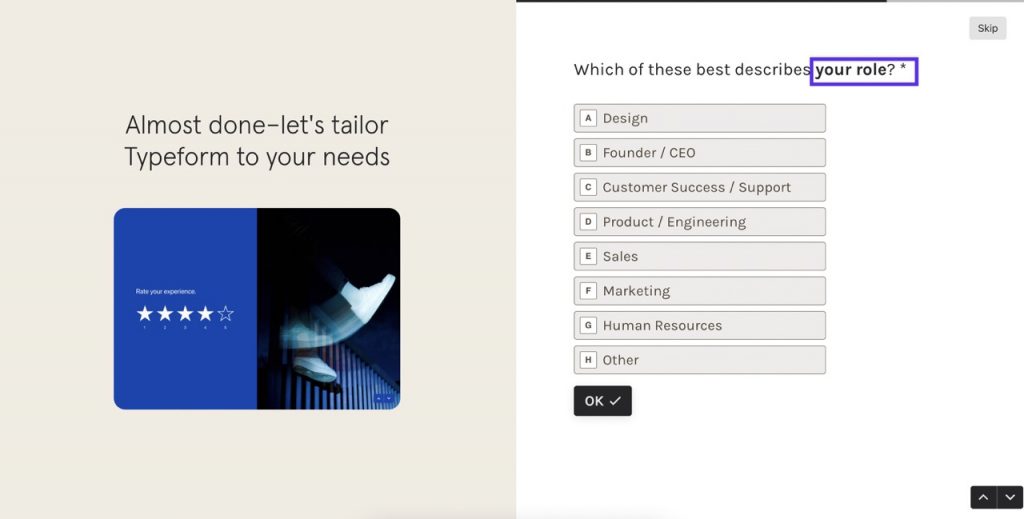
This not only improves the user experience but also helps to reduce the time required for onboarding and getting familiar with the service.
8. Identify Referral Opportunities
By asking “how did you first discover Typeform”, the platform can gather valuable information about the channels and tactics that are most effective at driving new users to the service.
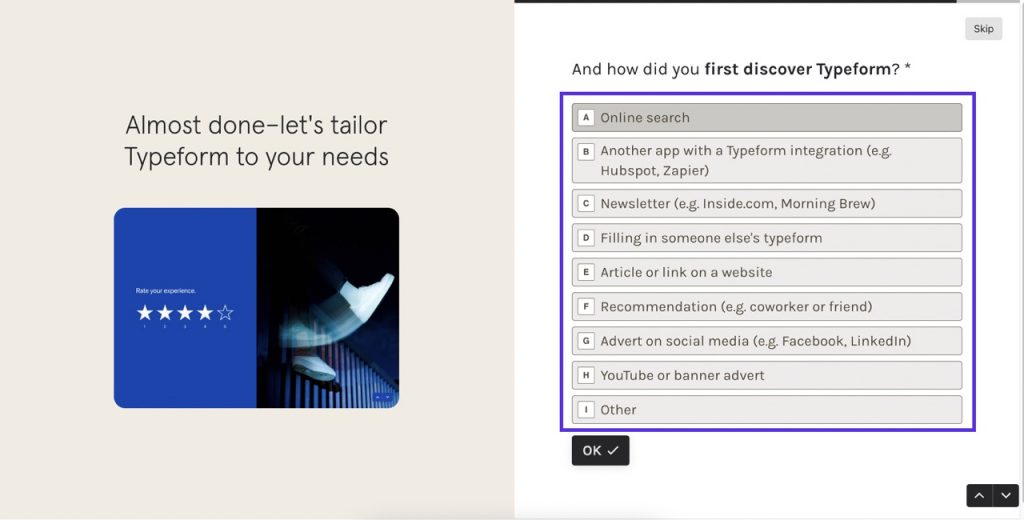
This can help them optimize their marketing efforts and allocate resources more efficiently.
Asking users how they discovered Typeform can also provide insights into what users like about the service and what might be causing them to choose it over competitors.

By understanding how users discovered Typeform, the company can also identify users who discovered the service through referrals
Customization, Convenience, or Complete Hands-Off
At the end of onboarding, Typeform gives users three options to choose from.
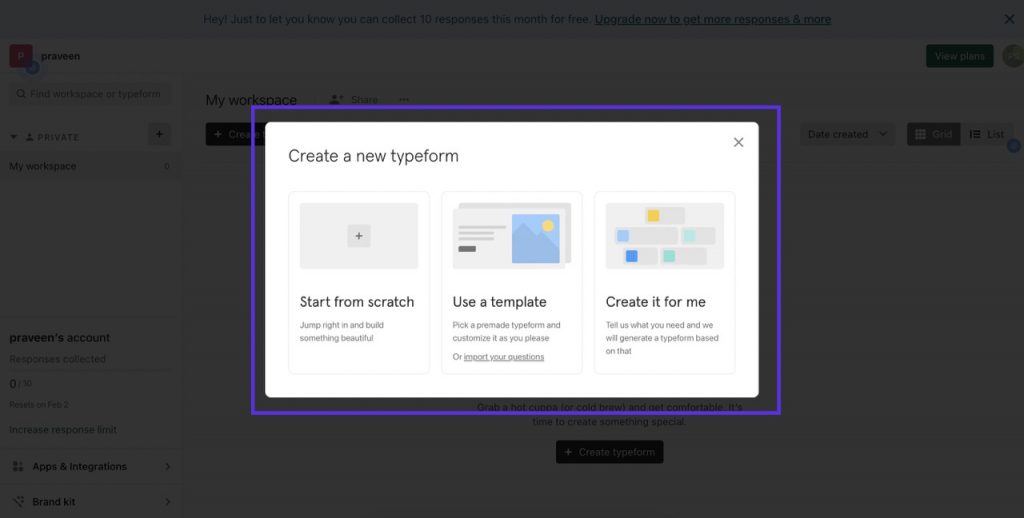
If the user is feeling particularly creative and wants to build a form from scratch, they can go for the first option.
If the user is short on time and doesn’t want to reinvent the wheel, the second option with its handy templates is for them.
And for those users who are too busy to even lift a finger (we get it, we all have those days), there’s the third option where Typeform does all the work for them.
The user can just sit back, relax, and let the form fairy work her magic.
No matter which option the user chooses, Typeform has got them covered.
Conclusion
In conclusion, Typeform’s onboarding flow is a true masterpiece in user experience design.

By sharing the top secrets and strategies from their process, we hope to inspire businesses of all sizes to up their onboarding game and deliver a seamless experience for new users.
Whether you’re looking to improve customer acquisition, retention, or overall satisfaction, taking a page from Typeform’s playbook is a surefire way to succeed.
Just be sure to use these insights ethically and don’t get caught trying to steal all of their secrets!

